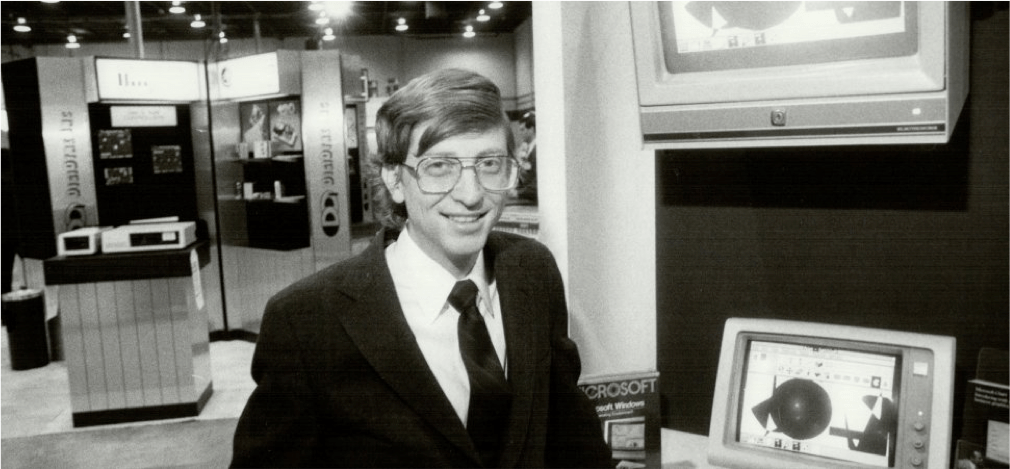A new generation of American philanthropists-multimillionaires, entrepreneurs who have grown up in the high-tech business, the so-called "high-tech philanthropists," has brought systemic philanthropic work to a new stage of development. The peculiarity of this generation with its unique strategies is that they made money at a relatively young age in a short time. Silicon Valley in California and the suburb of Seattle Redmond, where Microsoft is located, are filled with millionaires who are not forty yet. Many of them leave the sphere of activity in which they have made their millions, deciding that they have done everything they could in this area and now must find themselves in something else. There is a known case when a programmer who became a millionaire at Microsoft dropped out of programming and enrolled in medical school, saying that he had solved all the programming tasks he wanted. He has earned the money that he has enough for life, and now he wants to find some new area in which it will be useful to people, where he can fulfill himself in another way.
One way or another, young business people, having built up massive capital in the explosion of high-tech business, exist in a culture of systemic philanthropic work, in which all large entrepreneurs created funds to manage their money for charity purposes. And, of course, young benefactors in the hi-tech business are no exception. They also give massive amounts of money to various charitable organizations, including those that they establish.
An essential difference from the situation of previous decades that struck America is that these people with big money are young and energetic. They did not come to charity at the dusk of years when their main business would be the creation of charity strategies and organizations that would fulfill the tasks after their death. These people themselves are ready to manage their charity. In a sense, we are returning at this stage to the era of the great philanthropists of Rockefeller and Carnegie, when the latter himself ran his charitable corporation.
It is worth noting that this era of new big money in charity is also characterized by a new fierce competition between philanthropists in the field of which of them will create the most successful programs. In this sense, the relationship between Ted Turner and Bill Gates is very typical. When Turner decided to pay part of the US debt to the United Nations, he directly told reporters that the newly rich people of America had the responsibility to solve many global and American problems that they could solve with their money. For American journalists, this remark sounded unmistakable - Turner, without giving names, points to new young hi-tech entrepreneurs, in the first instance, Bill Gates.
Bill Gates, of course, answered this challenge not only to Turner but also to the journalistic community, which eagerly picked up this idea. He not only began to give money to charity but created his large fund. It is called the Bill and Melinda Gates Foundation and is the largest fund in the world, distributing gigantic amounts. Naturally, the main strategic decisions of this fund are made in a narrow circle of people who manage the fund. This circle includes Bill Gates himself, his wife Melinda, and two co-presidents of the foundation: Gates 'father, Bill Gates, Sr., and Patty Stonesifer, Gates' former Microsoft colleague.
The Gates Foundation is a very vivid example when the most significant entrepreneur retains the full opportunity to determine all the strategies of his foundation. But other modern young donors strive to act in the same way, and now we are entering a new era of charity, and we do not even know what it will characterize. Perhaps the new foundations will lose the character of purely charitable organizations and will become similar to business corporations, identical to those where their founders work. It is possible that some new philanthropists, like Carnegie, will abandon their business and turn entirely to philanthropic activities, applying in this area all the business skills and strategies that they implemented earlier, and this will undoubtedly stir up an established system. The fact that modern researchers who conduct research, collecting information, and conducting interviews with new benefactors will be wondered. One thing is clear: an outbreak of wealth based on high technology for many years to come sets new trends in the development of systemic philanthropic work.
About the author
Melisa Marzett is the author of articles at writing-help.org, who is passionate about reading, writing, exploring, traveling, and communicating. She likes movies, sports, fashion, handicrafts, and giving gifts. She has a cat whose name is Timothy, and she loves him very much. She is an animal rights activist and an excellent red semi-sweet wine enthusiast

